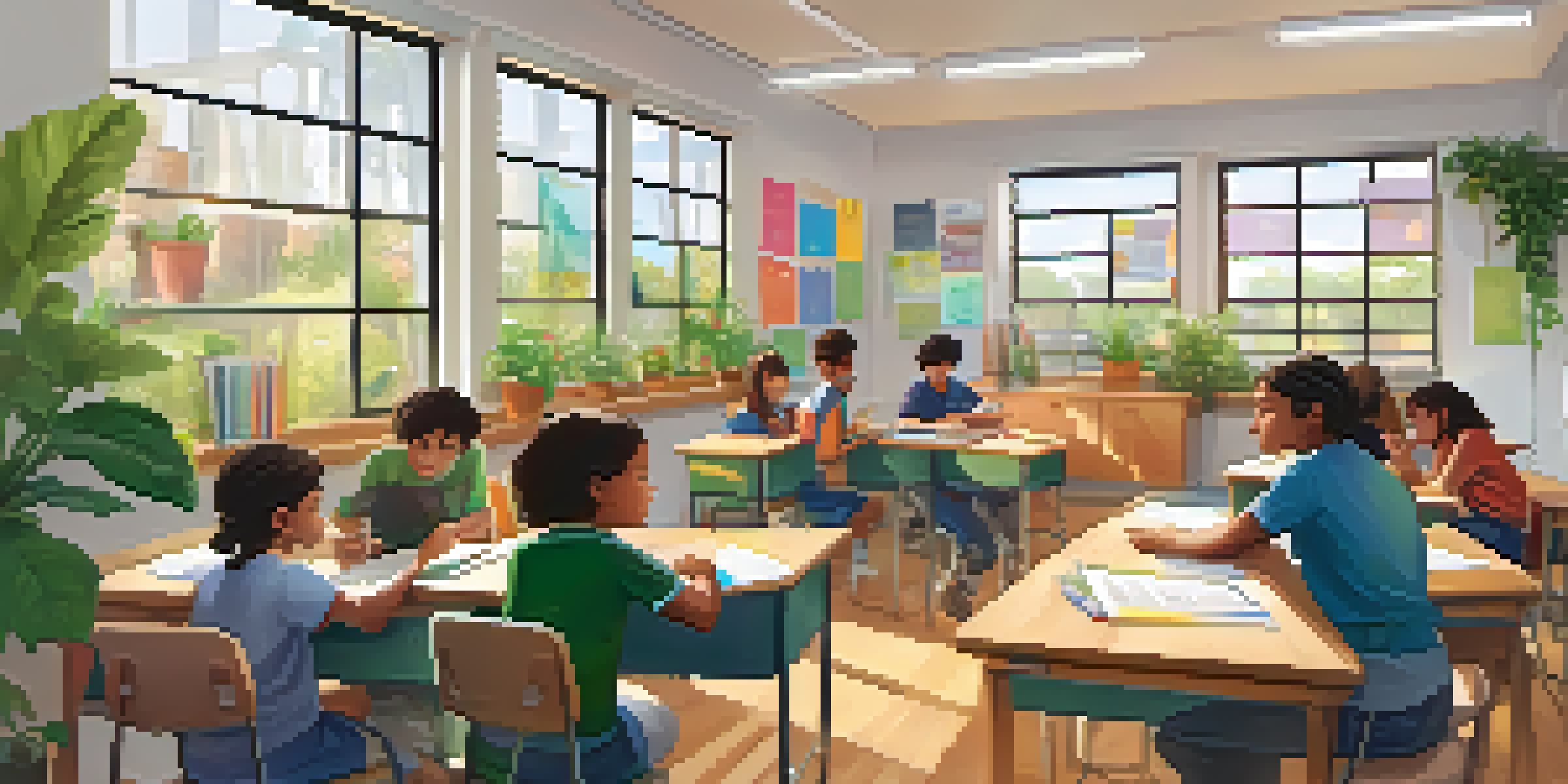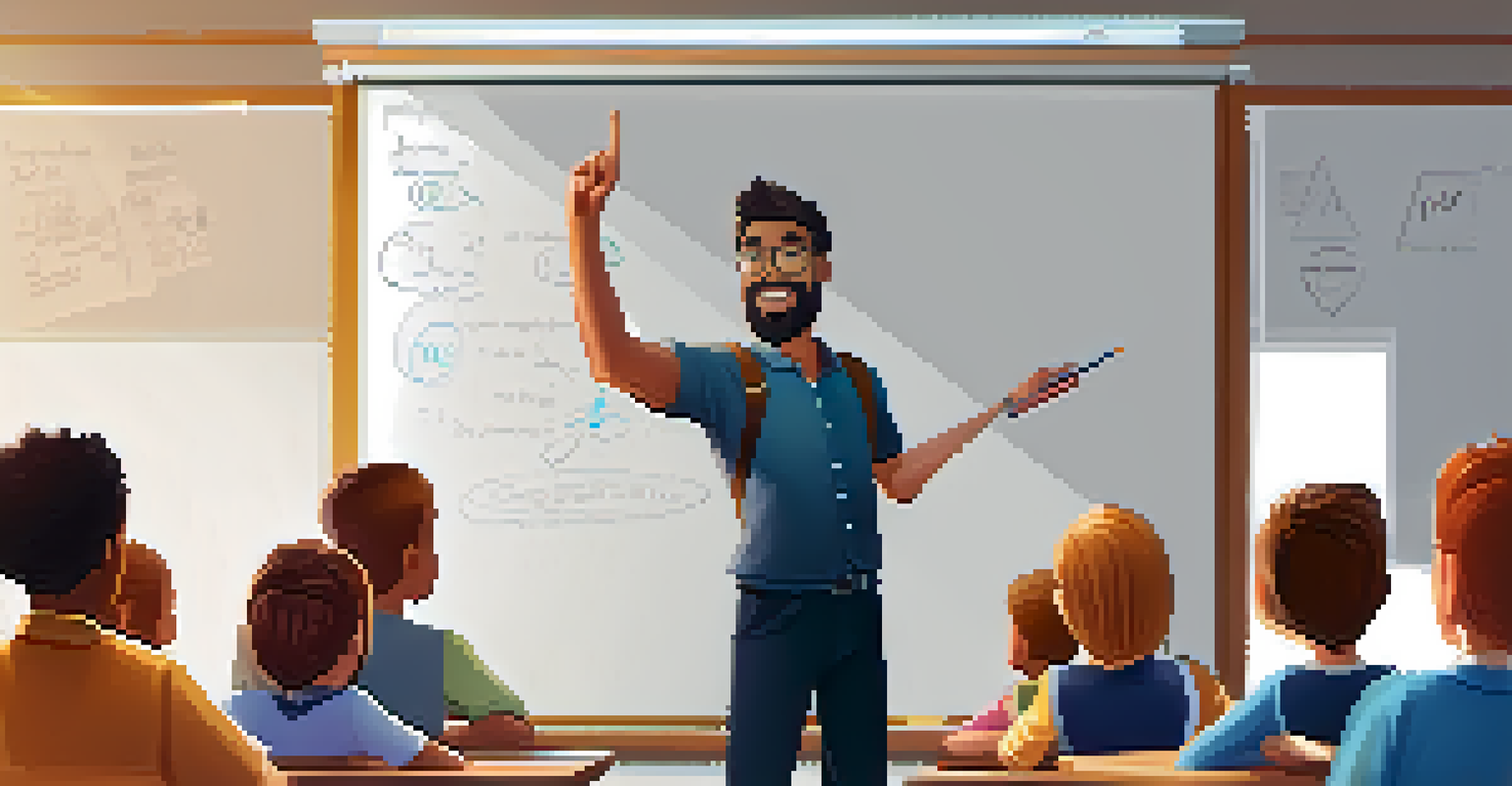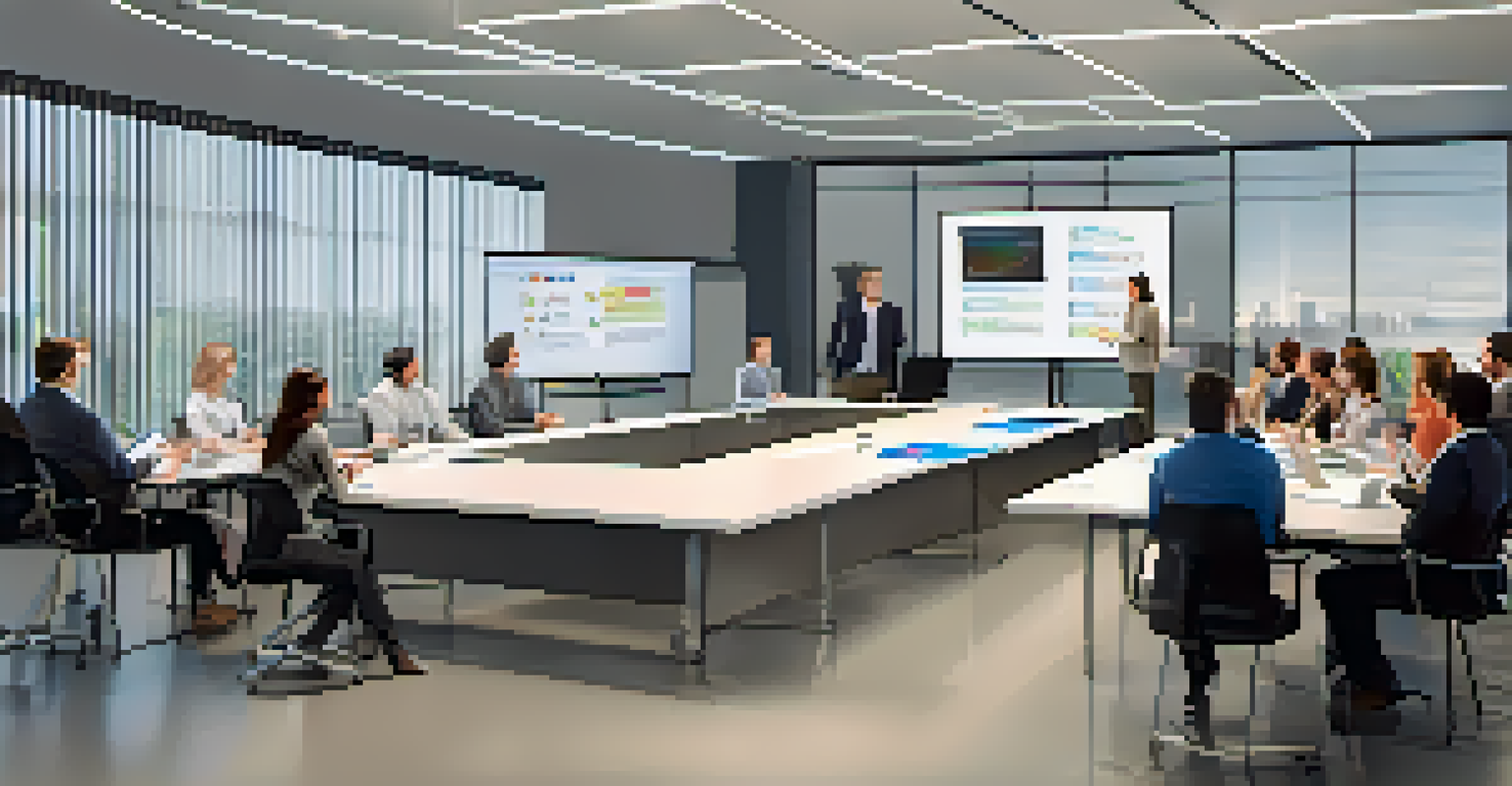Understanding the Basics of Learning Experience Frameworks

What is a Learning Experience Framework?
A Learning Experience Framework (LEF) serves as a structured approach to designing educational experiences. It guides educators and instructional designers in creating effective learning environments. By focusing on learner needs and outcomes, an LEF helps ensure that educational content is engaging and relevant.
Education is not the filling of a pail, but the lighting of a fire.
Think of an LEF as a roadmap; just like a map directs you to your destination, an LEF directs the learning process. It outlines the pathways and strategies to foster meaningful learning. This clarity can be especially beneficial in complex subjects where guidance is crucial.
Ultimately, the goal of a Learning Experience Framework is to enhance the overall educational journey. By applying these principles, educators can create spaces that not only impart knowledge but also inspire curiosity and creativity among learners.
The Importance of Learner-Centered Design
At the heart of any effective Learning Experience Framework is the concept of learner-centered design. This approach prioritizes the needs and preferences of learners, creating an environment where they feel valued and motivated. When learners see that their experiences are tailored to them, engagement levels soar.

Imagine attending a class where the topics resonate with your interests and learning style. That's what learner-centered design aims to achieve. By incorporating various teaching methods and materials, educators can cater to diverse learning preferences, ensuring that every student has a chance to thrive.
LEFs Enhance Learning Experiences
Learning Experience Frameworks provide structured approaches that guide educators in creating engaging and effective learning environments.
Moreover, this design philosophy encourages collaboration and interaction, fostering a sense of community among learners. When students work together and share their insights, they not only deepen their understanding but also build valuable social skills that will serve them well in the future.
Key Components of Learning Experience Frameworks
Learning Experience Frameworks are built on several key components, each playing a vital role in the learning process. These components typically include learning objectives, assessment strategies, instructional methods, and feedback mechanisms. Together, they create a cohesive structure essential for effective learning.
The only way to learn is to live it. If you don't live it, you don't know it.
For instance, learning objectives serve as the guiding star, indicating what learners should achieve by the end of a course. Meanwhile, assessment strategies allow educators to measure progress and provide insights into areas needing improvement. Without these elements, it would be challenging to track student success.
Additionally, instructional methods encompass various techniques that engage learners, from lectures to hands-on activities. Feedback mechanisms ensure that learners receive constructive insights to enhance their skills. Each component interlinks to create a robust learning experience that drives success.
Benefits of Implementing Learning Experience Frameworks
Implementing a Learning Experience Framework can yield numerous benefits for both educators and students alike. One significant advantage is the improved alignment between teaching strategies and learning outcomes. When these elements are in sync, learners are more likely to achieve their educational goals.
Another key benefit is the increased engagement and motivation among students. By designing learning experiences that resonate with learners, educators can spark curiosity and enthusiasm. This heightened interest leads to a more dynamic classroom atmosphere, fostering deeper connections with the material.
Focus on Learner-Centered Design
Prioritizing the needs and preferences of learners fosters higher engagement and motivation through tailored educational experiences.
Lastly, LEFs promote continuous improvement by encouraging feedback and reflection. Educators can adapt their approaches based on learner responses, ensuring that education evolves to meet changing needs. This adaptability is essential in today's fast-paced world, where knowledge and skills must keep up with progress.
Challenges in Developing Learning Experience Frameworks
While Learning Experience Frameworks offer many advantages, developing them can come with challenges. One common hurdle is the diverse range of learner needs. Educators must navigate varying backgrounds, learning styles, and preferences to create an inclusive framework that addresses everyone.
Another challenge lies in resource allocation. Designing a comprehensive LEF requires time, effort, and sometimes additional funding for materials or training. Educators may find it daunting to balance this with their existing responsibilities, leading to delays in implementation.
Finally, measuring the effectiveness of a Learning Experience Framework can be complex. Educators must establish clear metrics to assess success and gather feedback effectively. This process can be time-consuming but is crucial for ensuring that the framework meets its intended goals.
Real-World Examples of Learning Experience Frameworks
To fully grasp the impact of Learning Experience Frameworks, it's helpful to look at real-world examples. Many educational institutions, such as universities and training centers, have successfully implemented LEFs to enhance their curricula. These frameworks often incorporate technology to facilitate learning and provide flexible access to resources.
For instance, a university might use an LEF to integrate online learning modules alongside traditional classroom instruction. This blended approach allows students to access materials at their own pace while still benefiting from in-person discussions. Such flexibility caters to diverse learning preferences, making education more accessible.
Benefits of Implementing LEFs
Implementing Learning Experience Frameworks leads to better alignment between teaching strategies and outcomes, increasing student engagement and facilitating continuous improvement.
Additionally, corporate training programs often utilize Learning Experience Frameworks to equip employees with essential skills. By designing tailored training modules that align with organizational goals, companies can foster a culture of continuous learning and professional development, benefiting both the employees and the organization.
The Future of Learning Experience Frameworks
As we look ahead, the future of Learning Experience Frameworks appears promising. With advancements in technology, such as artificial intelligence and virtual reality, educators have new tools at their disposal to create innovative learning experiences. These technologies can simulate real-world scenarios, providing learners with hands-on practice in a safe environment.
Furthermore, as education continues to shift towards a more personalized approach, we can expect LEFs to evolve accordingly. Tailoring learning experiences to individual needs will become increasingly feasible, allowing educators to cater to each student's unique journey. This trend aligns with the growing emphasis on lifelong learning in today's rapidly changing world.

Ultimately, the ongoing development of Learning Experience Frameworks will play a crucial role in shaping the future of education. By embracing new methodologies and technologies, educators can create dynamic, interactive learning environments that prepare learners for success in their personal and professional lives.